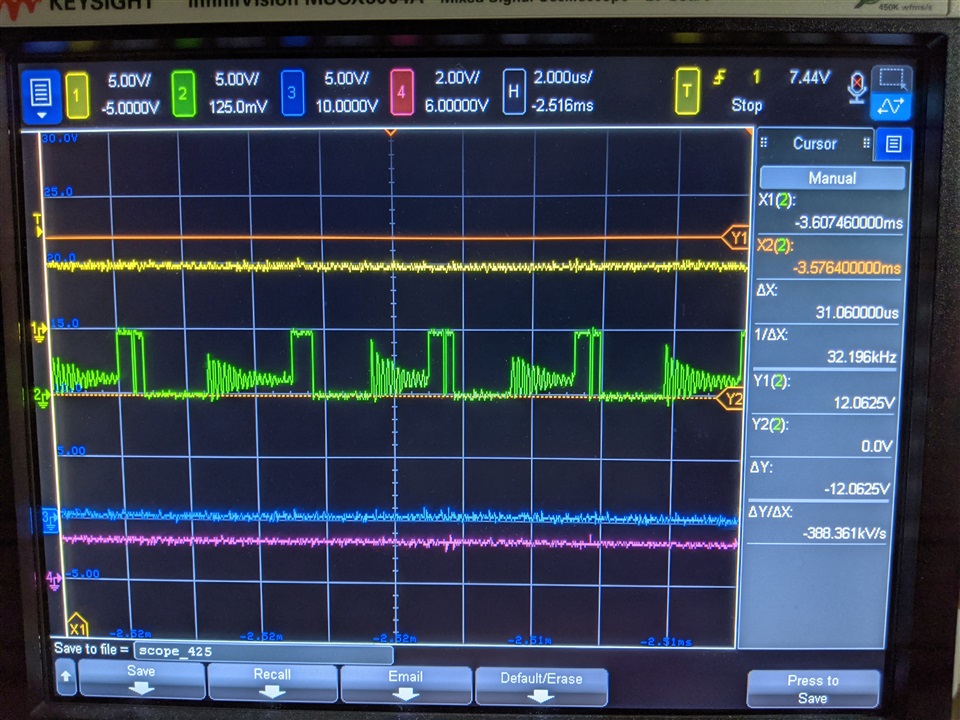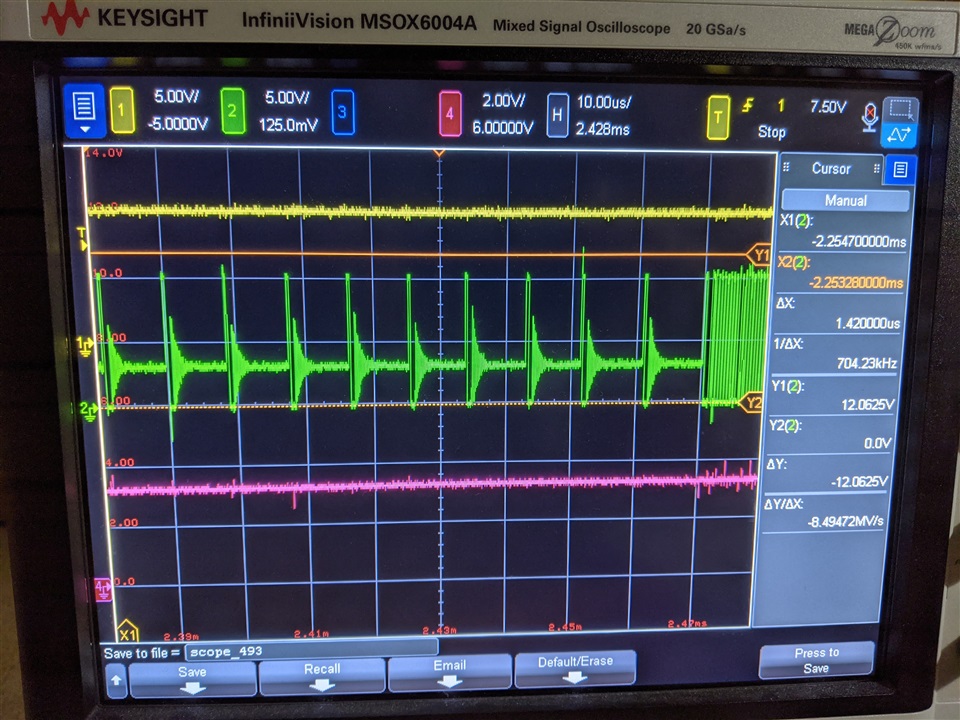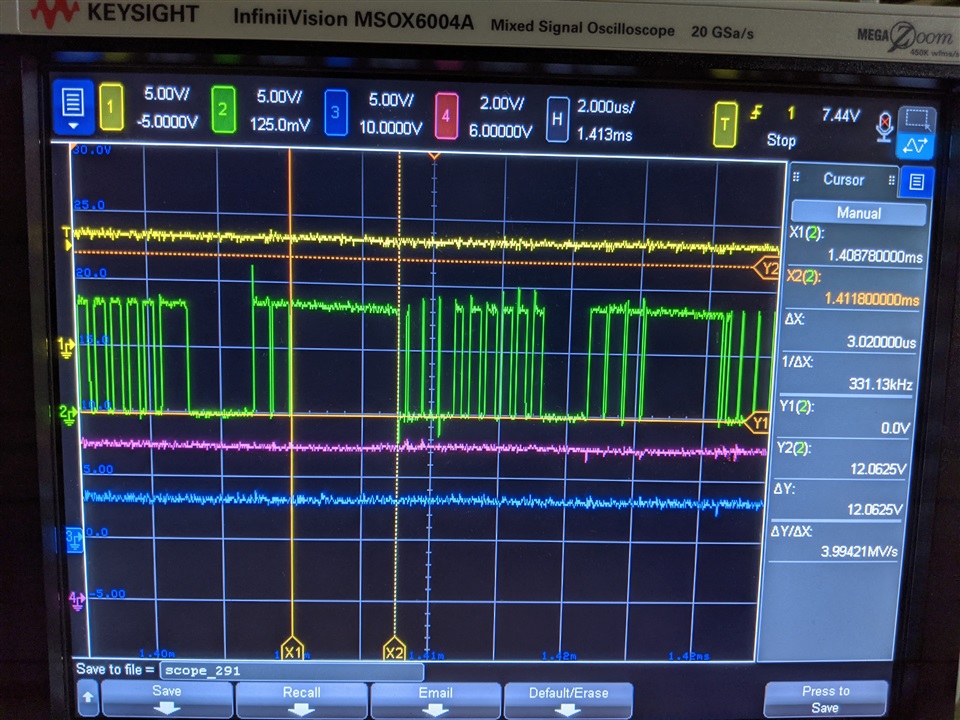Hi TI Support,
We recently fabricated 10 boards using a new design with TPS62912. The build is experiencing a high failure rate. The design came off Webench. See specs below.
We saw 4 boards with output high (40% failure which is a lot). The failure is related to 2.2uH Pulse Electronics inductor. Replacing the inductor with a new unit (same Pulse P/N) fixes the high output issue. Removed inductor shows abnormally low inductance. This inductor was called out by Webench.
We are not sure if the inductor failed due to quality issues or the inductor failed due to IC controller issues. After inductor was replaced, the switch node waveform looks normal; however the power up sequence (softstart) shows some unexpected behavior. We are seeing double pulsing. See attached scope captures. On one TI Eval board for TPS62912, the startup waveform is different. It does not double pulse and has uniform pulse shape through out the entier softstart duration until it reaches steady state (duty cycle = Vo/Vin).
Questions:
1. Is the observed double pulsing abnormal?
2. Is this (above) an indication of pending controller failure or would lead to inductor failure (excessive high peak current)?
3. Are there any known limitations of the TPS62912 part running at 2MHz?
4. Should we back off to 1MHz for a more robust design?
5. Possible cause for inductor failure?
Regards,
John
DC/DC Converter Spec:
Controller: TPS62912
Vout: 5.0V
Iout: 2Amp max (actual loads in the 0.5A range)
Vin: 8V to 16V
Switching freq: 2MHz
Inductor: 2.2uH (called out by Webench)
Inductor Manuf: Pulse
Inductor P/N: PA4332.222NLT
Attached scope captures:
1. customer's failed board with 5Vout high at 5.9V, 2.2uH inductor replaced, Vout=5V, Vin=12V, light loads < 0.5A, scope capture shows switch node double pulsing on power up (start-up): green channel
2. TI Eval board (TPS62912 EVM-077, SN:670-020-002-1) switch node, ramp up, no double pulsing, board Vin=12V, Vout=3.3V, no load, 2MHz: green channel
3. customer schematic based off Webench design







